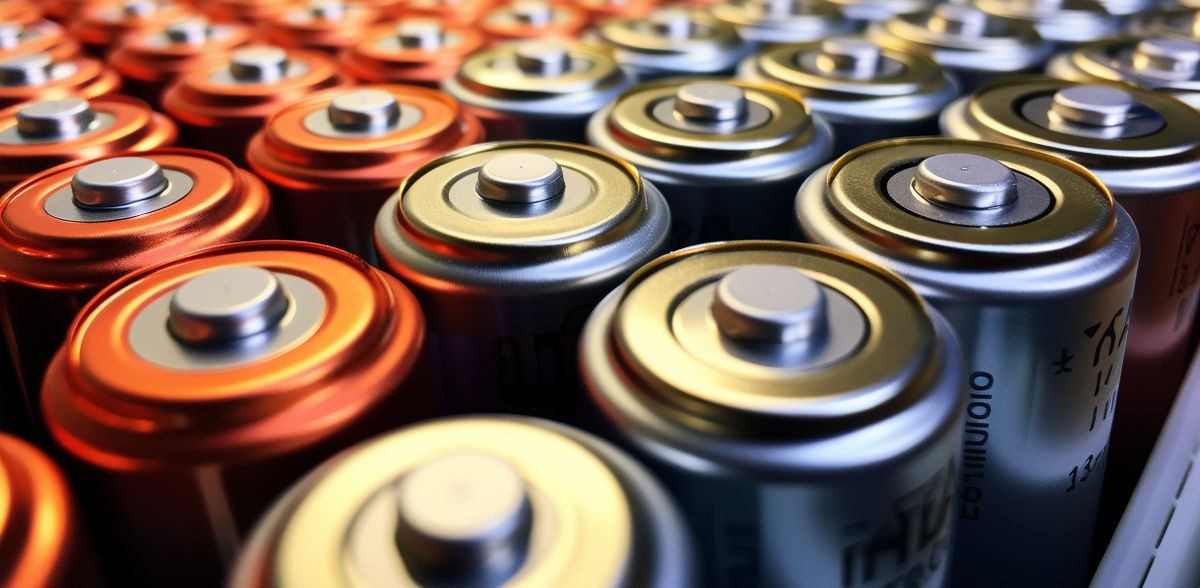Nature Study Takes a Close Look at the Optimization of the Energy Consumption of Battery Cell Factories
Battery cell production plays a key role in the transformation of mobility and thus in achieving national climate protection goals
With the current state of product and production technology, the electricity demand of all battery factories planned worldwide in 2040 will be 130,000 GWh per year, equivalent to the current electricity consumption of Norway or Sweden - this is the conclusion of a study by the research team led by Dr. Florian Degen of the Fraunhofer Research Institution for Battery Cell Production FFB, the MEET of the University of Münster, the Helmholtz Institute Münster and the University of Münster. However, new product and production technologies can optimize battery cell production to achieve savings of up to 66 percent, equivalent to the energy consumption of Belgium or Finland (in 2021).

The research results indicate that electricity demand for battery cell factories will increase to 130,000 GWh per year by 2040.
Fraunhofer FFB
With the rapidly growing demand for electric vehicles, the market for batteries is growing rapidly, accelerating the need for battery cell factories. A study by the World Economic Forum and the Global Battery Alliance predicts that global battery demand will grow to 2600 GWh per year by 2030. This compares to a demand of about 400 GWh in 2022. However, current battery cell manufacturing processes are energy intensive and produce high levels of greenhouse gas emissions.
Study by Münster researchers analyzes energy consumption of gigafactories
Against this background, the question arises as to how the energy consumption of battery cell production will develop and how it can be reduced in the future by means of production and material technologies. To this end, the research team – Dr. Florian Degen (Fraunhofer FFB), Prof. Dr. Martin Winter (Münster Electrochemical Energy Technology (MEET) of the University of Münster; Helmholtz Institute Münster), Prof. Dr. Jens Tübke (Fraunhofer FFB, KIT) and Prof. Dr. David Bending (University of Münster; REACH - EUREGIO Start-up Center) - analyzed how much energy is required for current and future production at the battery cell- and macro-economic level. A distinction was made between lithium-ion batteries (LIBs) and alternative battery cells, so-called post-lithium-ion batteries (PLIBs).
130,000 GWh/a in 2040 with current battery and production technology
In the automotive and other industries, the upscaling of battery cell production is still in its early stages, but Dr. Florian Degen, author of the study and Division Director “Strategy and Corporate Development” at Fraunhofer FFB, points to the future demand for electricity: “Not only in Europe, but also in Asia and North America, the construction of battery cell factories is being promoted in order to drive the necessary change in mobility. Demand for electricity will multiply to 130,000 GWh per year by 2040. This is equivalent to the annual electricity demand of Norway or Sweden in 2021”. According to the study, with today's know-how and production technology, it takes 20 to 40 kilowatt-hours of energy to produce a battery cell with a storage capacity of one kilowatt-hour, depending on the type of battery produced and even without considering the material.
Future production: new technologies require less energy
The results of the study by the research team predict that technological improvements in production, such as the use of heat pumps, alternative drying technologies, new drying room concepts, etc., as well as learning and economies of scale, can save up to 66 percent of energy by 2040. These potential savings are equivalent to the electricity consumption of Belgium or Finland in 2021. Similarly, the results show that the production of alternative battery technologies, such as solid-state batteries, requires significantly less energy per unit of battery storage capacity produced than the production of current lithium-ion batteries.
LIBs are currently the dominant battery technology on the market due to their high energy density for longer ranges and long battery charging cycles (1000 to 6000 cycles). As a result, they cover a wide range of applications in e-cars or trucks, as well as stationary and mobile terminals. “In addition to excellent performance and maximum recyclability, energy efficiency and the associated costs - both for the assembly and the operation of the battery cells - will play an increasingly important role in the choice of technology in the future, especially for batteries beyond lithium-ion technology,” says Prof. Dr. Martin Winter, Scientific Director of the MEET Battery Research Center at the University of Münster and Director of the Helmholtz Institute Münster of Forschungszentrum Jülich.
The Fraunhofer FFB focuses on researching new and innovative production technologies. On the basis of extensive empirical data from science and practice, as well as from investigations of the company's own infrastructure, solutions are developed that sustainably optimize the entire value chain. Environmental solutions, for example, can make a decisive contribution to reducing energy and operating costs. “Our goal is to make the production of today's batteries (LIBs) more sustainable and cost-effective and to enable the industrial production of future battery cells (PLIBs),” emphasizes Dr. Florian Degen.
Intensive research and development needed
The authors of the study draw the following conclusions: Battery cell production plays a key role in the transformation of mobility and thus in achieving national climate protection goals. It can be assumed that lithium-ion technology will continue to dominate the battery market for the foreseeable future. In order to meet the enormous energy requirements of battery cell factories, further efforts in research and development, especially for alternative battery technologies, are indispensable in Germany and Europe. In the future, this could save 50 percent or more of today's energy requirements.
Original publication
Other news from the department science
Most read news
More news from our other portals
See the theme worlds for related content
Topic World Battery Technology
The topic world Battery Technology combines relevant knowledge in a unique way. Here you will find everything about suppliers and their products, webinars, white papers, catalogs and brochures.

Topic World Battery Technology
The topic world Battery Technology combines relevant knowledge in a unique way. Here you will find everything about suppliers and their products, webinars, white papers, catalogs and brochures.































































